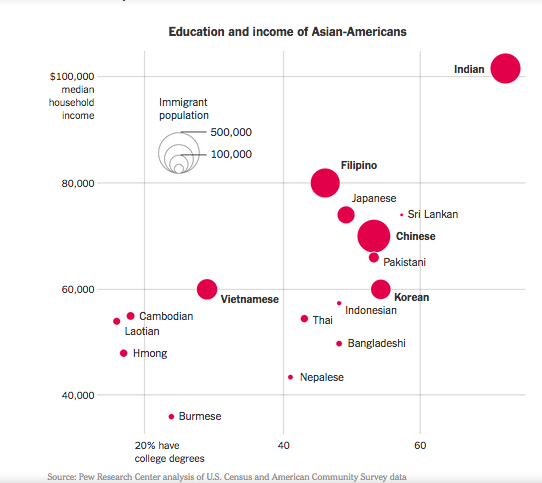By 2016, Asians in the top 10th of income distribution earned about $120,000 more than those in the bottom 10th. Disparities among Asian-Americans are primarily driven by the different levels of education, skills and English-language proficiency among the many groups that make up the diaspora. People from India and China have higher incomes than those from Southeast Asia because they have higher levels of education on average.
For example, three-fourths of Taiwanese and Indians in America have a bachelor’s degree or higher, said Jennifer Lee, a professor of sociology at Columbia University. Southeast Asian groups from countries like Vietnam, Cambodia and Laos, however, lag well behind the average for other Asian-Americans.
Jonathan Lee, 30, a Chinese-American who lives in New York and works as a senior designer at Etsy, and his sister, Jessica, are both college graduates, unlike their parents. “My father told us stories of sleeping on an ironing board at his father’s laundromat,” Mr. Lee said. “My mother came here when she was 19 and took night classes at F.I.T. to become a pattern maker. My father spent his career at ConEd. Now they own a home.”




